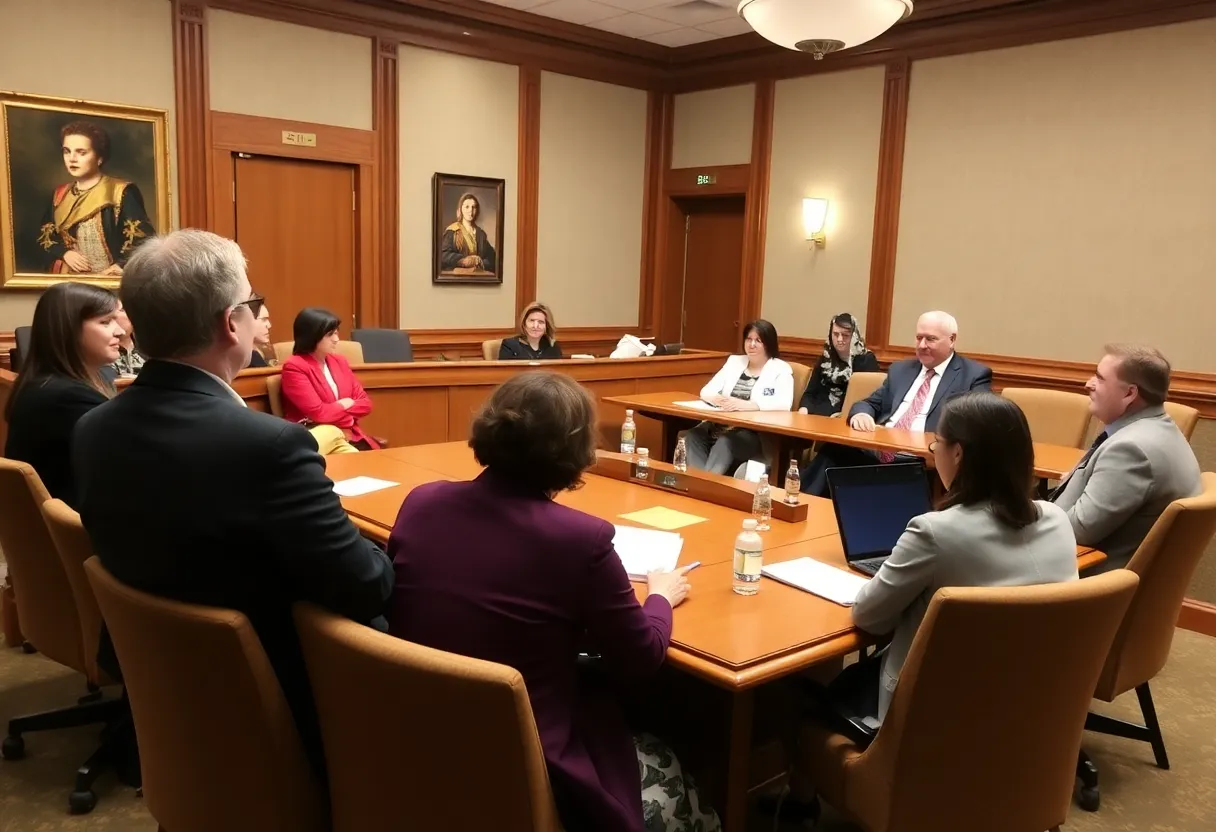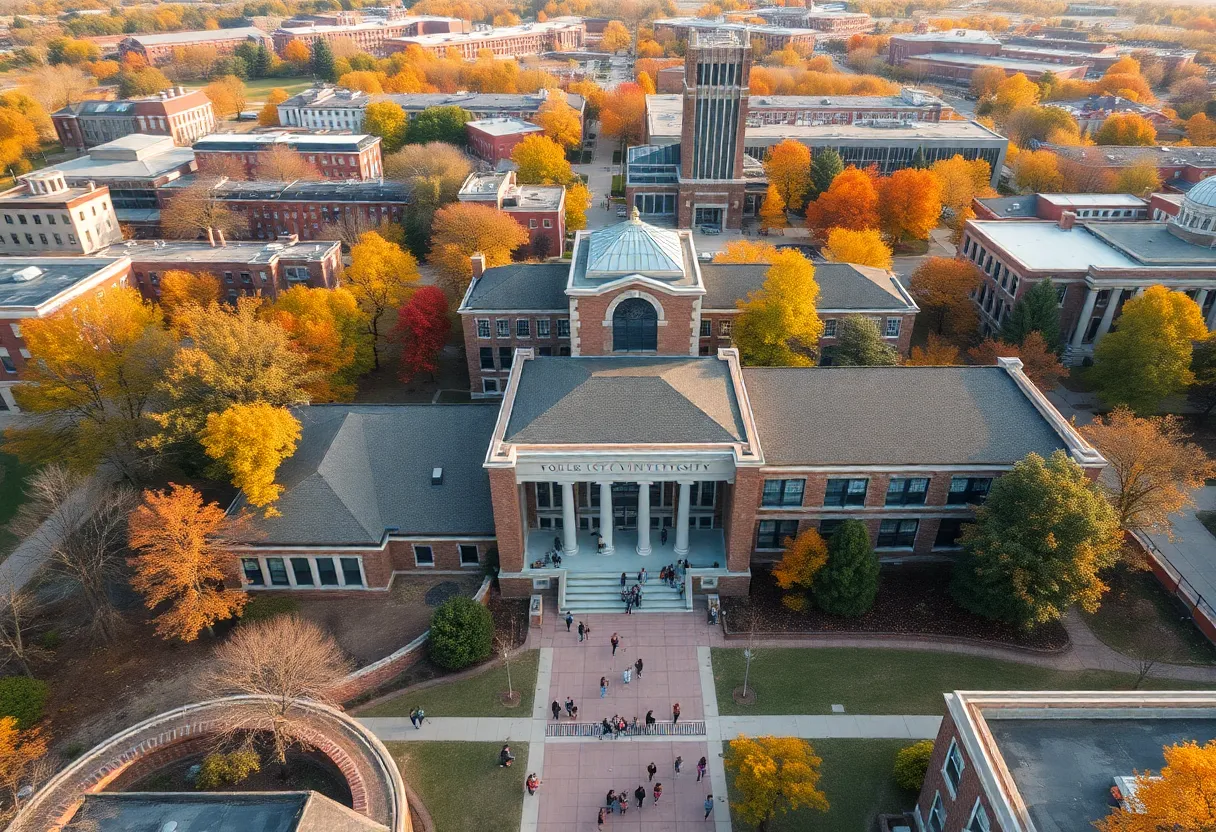Oklahoma City, October 21, 2025
Educators and lawmakers in Oklahoma City convened to tackle the alarming 45% high school graduation rate among homeless students. Emphasizing the need for targeted interventions, they discussed barriers like unstable transportation and lack of housing access. Proposed solutions include increased funding for counseling services and on-site support programs. Pilot initiatives in local schools have shown promise, with significant improvements in graduation rates. As winter approaches, there’s a pressing call for immediate action to uplift these vulnerable students and ensure equitable education.
Oklahoma City Educators and Lawmakers Convene to Tackle Low Graduation Rates Among Homeless Students
Oklahoma City educators and lawmakers gathered at the state capitol to confront the alarmingly low high school graduation rates for homeless students, which currently stand at just 45%. This meeting highlighted the pressing need for targeted interventions to support this vulnerable group, as local data underscores the scale of the challenge.
Addressing Barriers Faced by Homeless Students
The discussion focused on the significant obstacles homeless students encounter, which directly impact their ability to complete high school. In Oklahoma City Public Schools alone, more than 2,000 students identify as homeless, dealing with issues such as unstable transportation and lack of consistent access to basic needs. These barriers often lead to missed classes, incomplete assignments, and higher dropout rates. Lawmakers emphasized the importance of immediate action to prevent these challenges from derailing educational progress. Representative Jamie Pae, a primary sponsor of proposed legislation, advocated for expanded funding to create comprehensive support programs, including access to counseling services and housing stipends designed to stabilize students’ lives.
Proposed Solutions and Pilot Program Successes
Central to the proposals were initiatives aimed at providing on-site resources through partnerships between local schools, shelters, and community organizations. These efforts would offer practical assistance, such as transportation support and temporary housing options, directly at school sites to minimize disruptions. Pilot programs already in place in districts like Putnam City have demonstrated positive results, with a noted 15% increase in graduation rates among participating homeless students. This evidence suggests that scalable, resource-backed strategies can effectively boost outcomes.
To build on these successes, advocates called for a substantial budget allocation of $5 million in the upcoming fiscal year. This funding would enable the expansion of support programs across the state, ensuring more students receive the help they need to stay on track academically. The emphasis on early intervention was clear, with plans to integrate these services before additional families face seasonal hardships, particularly as colder weather approaches and exacerbates housing instability.
Personal Impacts and Broader Educational Goals
Personal accounts from affected students illustrated the profound emotional and practical toll of homelessness on education. One teenager described how access to temporary housing allowed her to focus on her studies and ultimately graduate, highlighting the transformative potential of targeted aid. Such stories reinforced the human element of the issue, showing how stability can foster resilience and academic achievement.
This gathering reflects Oklahoma’s ongoing commitment to inclusive education, with a specific focus on closing achievement gaps for at-risk youth. By prioritizing support for homeless students, the state aims to create equitable opportunities that extend beyond immediate graduation rates to long-term success in higher education and careers. The low 45% graduation figure serves as a stark reminder of the work ahead, but the proposed measures offer a roadmap for meaningful change.
The meeting comes at a critical time, as winter months often intensify challenges for homeless families, including limited shelter availability and increased health risks. Lawmakers expressed determination to fast-track the new legislation, ensuring that resources are in place to protect students from further setbacks. Community involvement, from educators identifying at-risk students to local partners providing wraparound services, will be essential to the success of these initiatives.
Overall, the event underscored a unified approach to tackling educational inequities. With data from Oklahoma City Public Schools revealing over 2,000 affected students, the push for $5 million in funding and expanded programs like those in Putnam City positions Oklahoma to make significant strides. As discussions continue, the focus remains on practical, evidence-based solutions that address root causes and promote student well-being.
(Word count: 612)
FAQ
What is the current high school graduation rate for homeless students in Oklahoma City?
The high school graduation rate for homeless students currently stands at just 45%.
How many homeless students are enrolled in Oklahoma City Public Schools?
Data from Oklahoma City Public Schools reveals over 2,000 homeless students facing barriers like unstable transportation.
What specific support programs are being proposed for homeless students?
The proposed legislation includes increased funding for support programs including counseling and housing stipends, with partnerships with local shelters and schools to provide on-site resources.
What results have pilot programs shown in districts like Putnam City?
Pilot programs in districts like Putnam City have shown a 15% rise in graduations among homeless students.
How much funding are advocates requesting for these initiatives?
Advocates pushed for $5 million in next year’s budget to scale these efforts statewide.
Why is there urgency to implement these changes now?
As winter approaches, urgency grows to implement changes before more families face hardship.
Key Statistics on Homeless Student Graduation Support
| Feature | Details |
|---|---|
| Graduation Rate | 45% for homeless students |
| Number of Affected Students | Over 2,000 in Oklahoma City Public Schools |
| Proposed Funding | $5 million for statewide efforts |
| Pilot Program Impact | 15% rise in graduations in districts like Putnam City |
| Key Barriers | Unstable transportation and lack of housing |
| Support Elements | Counseling, housing stipends, on-site resources |
Deeper Dive: News & Info About This Topic
HERE Resources
Oklahoma City Ranks Moderately in National Study on Costs of Living Alone
Moore, OK Begins Construction on Housing Village for Homeless Students





